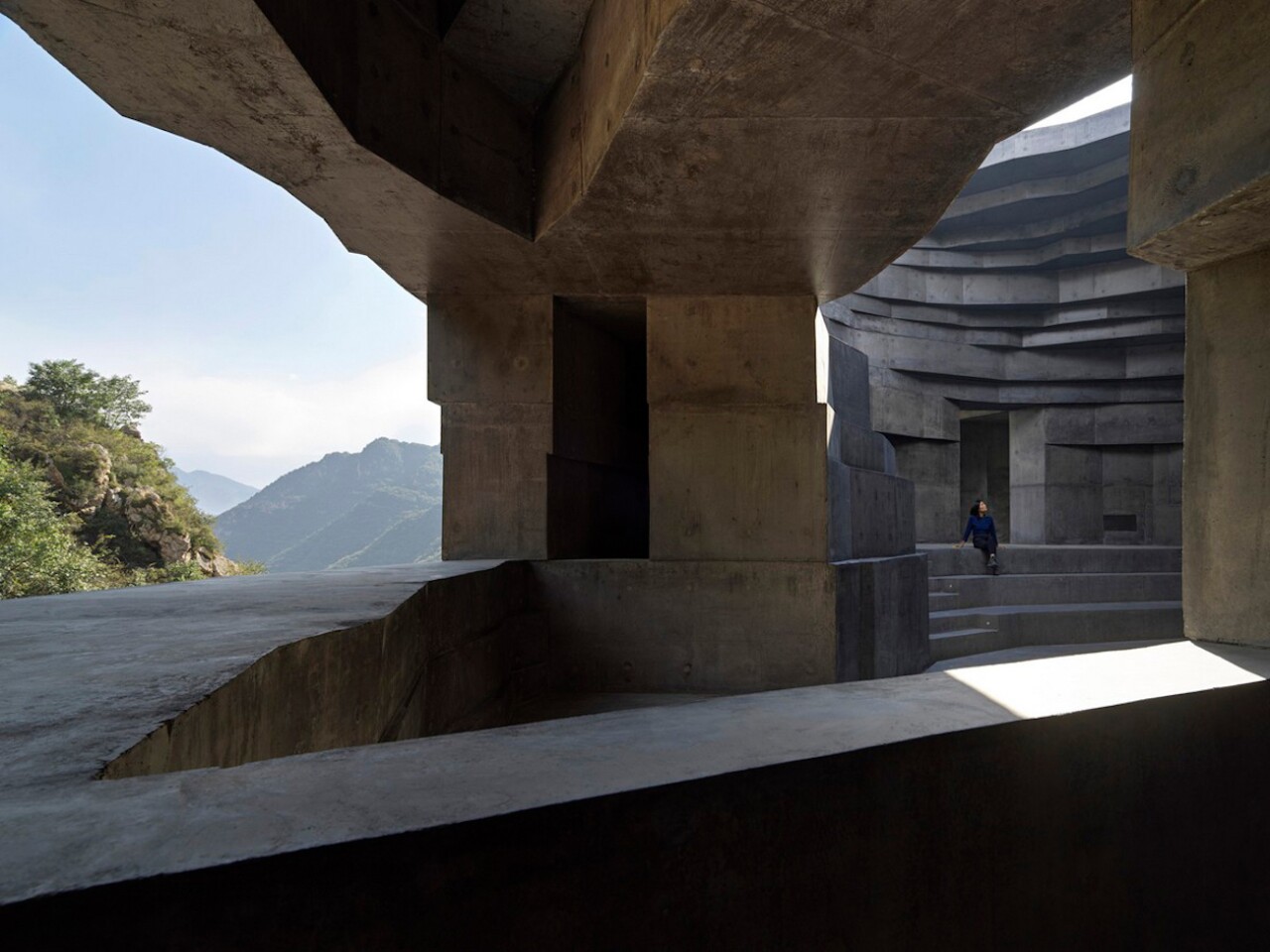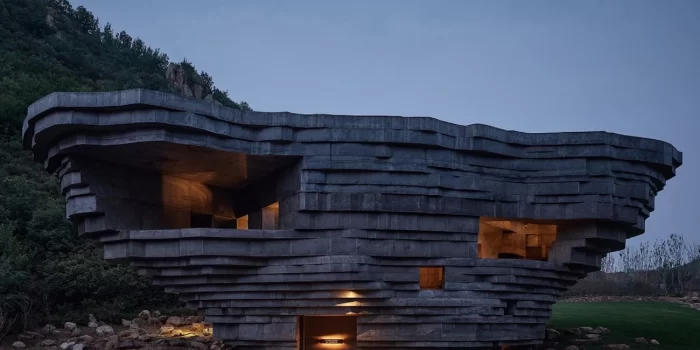OPEN Architecture has been working on a project that people were waiting for and now it is out. It is none other than the Chapel of Sound and it is amazing. This rock-like concert hall gives a unique performance space near the Great Wall of China.
The Chapel of Sound is situated in a rugged mountainous area with two hours drive from Beijing, near some ruined areas of the Ming Dynasty-era Great Wall which is the most famous part of The Wall.
It is made from concrete and an aggregate of local mineral-rich rocks. The outlook takes inspiration from the properties of resonant cavities in shells, wooden instruments, and the human ear. It was finalized by using specialist software. In addition, acoustic engineers worked on it to ensure it would be a superb space for live music.

The inner side of the structure is 790 sq m (8,503 sq ft) and has a semi-outdoor amphitheater, an outdoor stage, and many winding staircases that take you to the viewing points, including one on the roof that offers views of the Great Wall. Bronze detailing is used in handrails and doors, to add a little warmth to the concrete.
The images revealed show a classical performer. However, the space seems just like a fit for a rock concert. It can also be booked as a space for less noisy gatherings. However, there is no air conditioning or heating installed. So, dress appropriately according to the weather. Still, the rain will not drain things.

“OPEN’s founding partners Li Hu and Huang Wenjing were driven by a desire to minimize the footprint of the concert hall in the valley, creating a structure that was in dialogue with the impressive natural landscape, while also feeling undeniably man-made,” says the firm. “The resulting rock-like structure is composed of an inner and outer shell with the space between operating like a truss and was ultimately achieved through close collaboration with an international engineering firm, Arup. Formed from concrete, each striation cantilevers out from the previous layer to create the inverted cone shape.”


